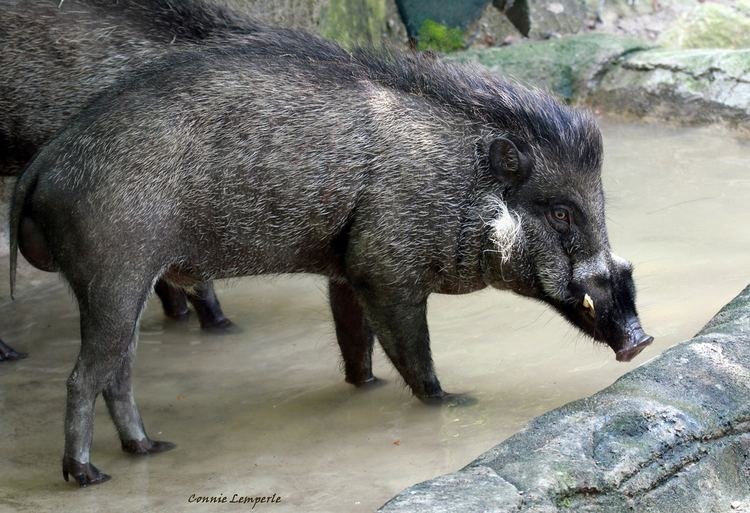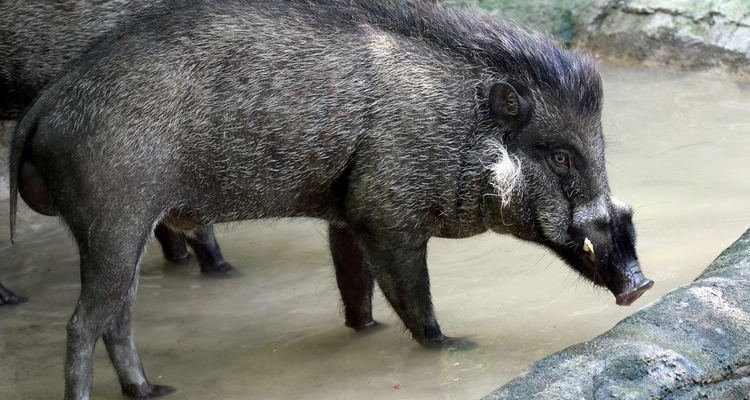
The Visayan warty pig is a fascinating creature, not just for its distinctive looks—with warts on its face and a bristly coat—but for what it does for the forest ecosystems it calls home. Understanding its role can help us appreciate how every species contributes to the health of our planet. So, let’s dig into the nature of this underappreciated pig and discover why it’s so important.
What is the Visayan Warty Pig?
The Visayan warty pig (Sus cebifrons) is a small, sturdy pig found only in the central islands of the Philippines. They are known for their distinctive physical features, including prominent warts on their faces, which are more pronounced in males. These warts are actually skin growths that protect them during fights with other males. The pigs have a stocky body, flat snouts, and a bristly coat that can range from grayish-black to brown.
These pigs are primarily herbivorous, munching on fruits, roots, and leaves in their forest habitats. Interestingly, they also play a role as omnivores, occasionally eating small insects or snails. Their adaptability allows them to thrive in the tropical environments, but they are also facing serious threats that we’ll explore later.
Ecological Importance of the Visayan Warty Pig
You might be wondering what makes the Visayan warty pig so special in its ecosystem. One of the most significant roles it plays is related to seed dispersal. As these pigs roam through the forests, they consume fruits and berries. The seeds from these fruits pass through their digestive system and are deposited back into the ground. This process helps plant species regenerate and allows forests to grow and flourish.
In addition, their foraging habits help with soil aeration. When the pigs root around for food, they disturb the soil, allowing nutrients to circulate more freely. This helps create a healthier habitat for other species, from plants to insects, and ultimately contributes to a more balanced ecosystem.
Threats to the Visayan Warty Pig
Despite their ecological significance, the Visayan warty pig is facing serious challenges. Habitat loss is the biggest threat they encounter. As forests are cleared for agriculture and human settlements, these pigs have fewer places to live and find food. Imagine being uprooted from your home and forced into a small corner of the world; that’s the reality for these pigs.
Moreover, hunting and poaching have taken their toll on the population as well. In some regions, they are hunted for food and sport, making it harder for them to recover. Conservation efforts are essential to protect their remaining habitats and ensure that these unique pigs continue to thrive.
Conservation Efforts for the Visayan Warty Pig
Many organizations and local communities are working tirelessly to save the Visayan warty pig. Conservationists are establishing protected areas where these pigs can roam freely and safely. They focus on preserving their natural habitats, creating awareness about their importance, and promoting sustainable land practices.
One promising initiative includes breeding programs aimed at increasing their population numbers. By carefully managing breeding in safe environments, conservationists hope to reintroduce healthy populations back into the wild. It’s like a second chance for these pigs to take their place in the ecosystem.
The Impact of Losing the Visayan Warty Pig
You might be thinking, “Why does it matter if we lose a pig?” Well, the loss of the Visayan warty pig would ripple through the ecosystem. As we discussed, they play a vital role in seed dispersal and soil health. If they disappear, the plants they help to grow could decline, impacting other animals that depend on those plants for food and shelter.
Essentially, the health of the ecosystem hangs in the balance. This intricate web of life signifies that every species, no matter how small, has a purpose and contributes to the greater whole. Losing one can lead to unexpected consequences that affect many others.
How Can You Help?
Many people are unaware of the challenges faced by animals like the Visayan warty pig. Here’s the thing: you can make a difference. Supporting conservation organizations dedicated to their protection is a powerful way to help. You can contribute through donations or volunteer opportunities that promote habitat preservation.
Education is another crucial aspect. Sharing information about the Visayan warty pig and its role in the ecosystem with friends and family can raise awareness. When more people understand how unique and important these pigs are, there’s a greater chance for effective conservation efforts.
The Visayan warty pig may not steal the spotlight, but its role in the ecosystem is as vital as any other species. From seed dispersal to soil health, these pigs contribute significantly to the lush forests they inhabit. Unfortunately, they face escalating threats, but with conservation efforts and public awareness, there’s hope for their future.
In the grand scheme, every animal, big or small, adds flavor to the recipe of life on Earth. Protecting the Visayan warty pig means preserving the delicate balance of its ecosystem—not just for the pigs, but for all the creatures that share their home. After all, when we care for one part of nature, we help ensure a healthier planet for everyone.

